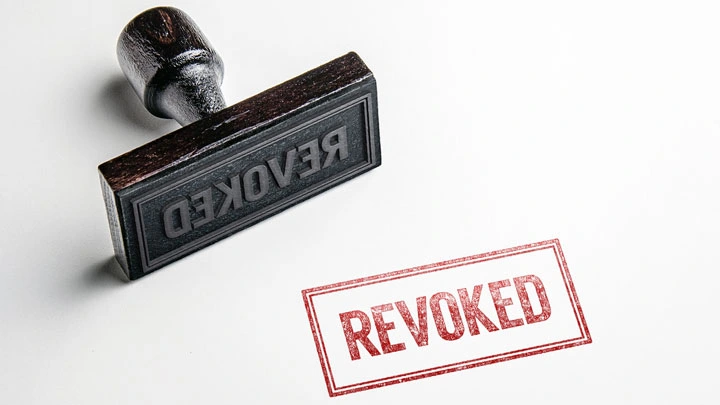
As known to many trademark protection is territorial in nature. Trademark applications filed in Malaysia and once registered and entered into the Register confer on the proprietor the exclusive rights to use and exploit the mark in Malaysia. Even so, this does not guarantee the validity of the trademark as a registered mark may be removed from the Register through an action by a person aggrieved based on two reasons, i.e., it is either to be held invalid or to be revoked. This article will provide a brief overview on revocation of registration by court as to non-use of trademark as stipulated under Section 46 of the Trademarks Act 2019.
Section 46 provides that an aggrieved person may apply to the Court to revoke a registered mark (in relation to some or all the goods and/or services registered) on the following grounds:
(a) the trademark has not used for three years following the date of issuance of the notification of registration
(b) use of the trademark has been suspended for an uninterrupted period of three years
(c) the trademark has become the common name in trade
(d) the trademark has been used in a manner that is liable to mislead the public.
As shown above, there are two grounds of non-use. The first ground is set out in Section 46(1)(a) where a mark may be revoked on the basis that ‘within a period of three years following the date of issuance of notification of registration, the trademark has not been put to use in good faith in Malaysia, by the registered proprietor or with his consent, in relation to the goods or services for which the trademark is registered, and there are no proper reasons for non-use.’ For a mark to be revoked under this ground, it is necessary to show in the three-year period the mark has not been used in Malaysia upon issuance of the notification of registration.
The second limb of non-use is set out in Section 46(1)(b) that use of the trademark has been suspended for an uninterrupted period of three years and there are no proper reasons of non-use. The provisos in Section 46(2) and (3) go on to state that a mark will not be revoked based on non-use if use is begun or resumed after the expiry date of three-year period and before the application for revocation is made. However, commencement or resumption of use shall be disregarded if it takes place within the period of three months before the application for revocation is made. This provision will not apply if the proprietor is able to prove that ‘preparations for commencement or resumption began before the proprietor became aware that the application for revocation might be made.’
As protection for trademarks is justified as a result of their use, the simplest way to circumvent a registered proprietor from having the mark to be expunged is simply by using it. So, what is meant by ‘use’ of the mark or what constitutes ‘use’? The ‘use’ of the mark must be in relation to the goods and/or services registered in Malaysia. The most obvious way a registered proprietor will be able to show use is by proving sales of the goods or supply of services bearing the sign / mark. Other uses, such as advertising in promoting the goods and/or services may also be sufficient (if they are related to the anticipated sales of goods or provision of services). If the trademark is used by a licensee, such use will be considered as use by the registered proprietor. Submission of evidence of use in Malaysia would usually be in the form of Statutory Declaration.
Another reason a mark may be revoked is when the mark has become generic. That is, when the mark designates a genus or type of product rather than the actual goods from a particular source in consequence of acts or inactivity of the registered proprietor as stipulated under Section 46(1)(c). For a mark to be revoked based on this ground, it is necessary to show that it has become common name in the trade for the product or service for which it is registered.
Some of the examples of the registered trademarks that have later become generic are ‘escalator,’ ‘aspirin,’ ‘videotape,’ sellotape’ to name a few.
Although use is vital to prevent a mark from being revoked on ground of non-use, however ‘overuse’ or ‘improper’ use may put the mark at risk of becoming genericized. To avoid a trademark to become generic which may directly dilute or lose the legal protection of the mark, it is an imperative conduct for the trademark proprietor to be vigilant in educating the public and consumers that the mark is used as a trademark or a brand name and not as the name of the actual goods sold.
The last reason a trademark may be revoked is on the basis that it has been used in a way which misleads the public, in which Section 46(1)(d) states
in consequence of use of the trademark by the registered proprietor or with his consent in relation to goods or services for which the trademark is registered, it is liable to mislead the public including in respect of the nature, quality or geographical origin of those goods or services.
For a mark to be revoked under this ground, the mark must have become misleading either because of the acts of the proprietor or as a result of acts done with their consent. To show there is a breach of this provision, evidence of the existence of actual deceit or that there is a sufficiently serious risk that the consumer will be deceived would be necessary. As a measure of precaution against any misuse of the mark by the licensee that might jeopardize its viability, the trademark owner should consider including use provisions (as to how the mark should be used) in their license agreement.
Section 46(5) informs us about the effect of revocation whereby if the registration of the trademark is revoked to any extent, the rights of the registered proprietor shall be deemed to have ceased from the date of application for revocation or if the Court is satisfied that the grounds for revocation exist at an earlier date, that date.
In conclusion, not only should the registered proprietor actively use their registered mark on the goods and/or services registered and in trade, but they should also ensure that proper record of use evidence is well-kept. Furthermore, trademark proprietors need to be vigilant to ensure the mark is effectively used as a trademark to prevent it from becoming a common name and thereby not being “trapped” under the ground of revocation.



